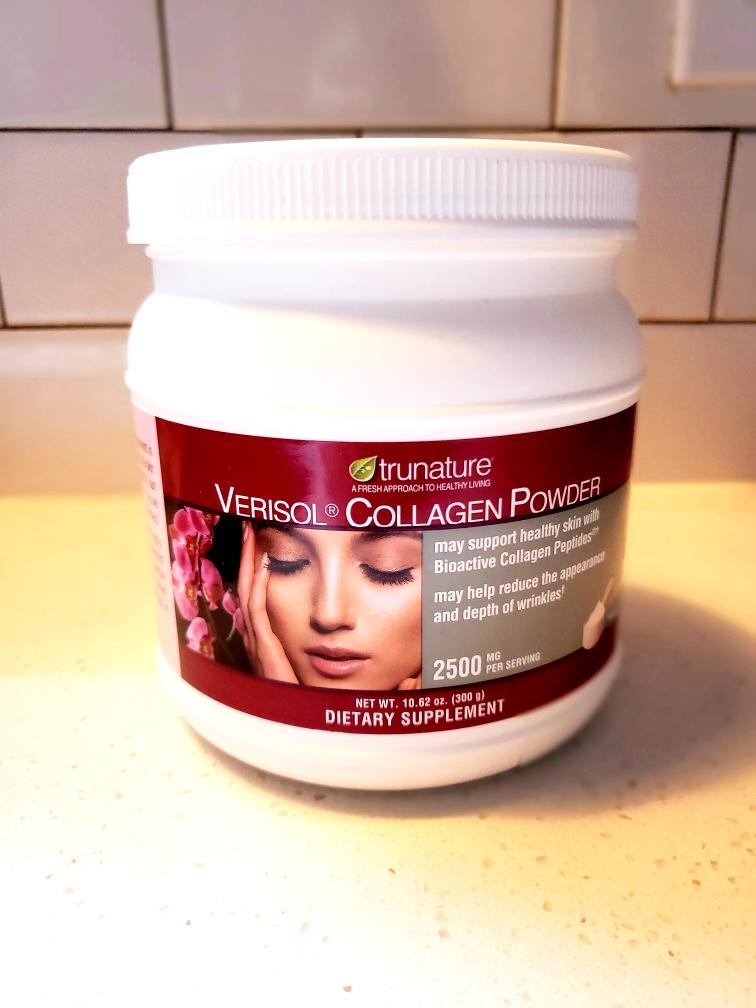“You are what you eat.” Do you believe that this statement applies to your skin? What does the gut have to do the skin anyway? Well, more than we previously thought. Not only are skin and the GI system similar in that they are 24/7 exposed to the outside world and thus have similar protective and regulatory immune mechanisms, but the skin responds to what we eat! While this has been a controversial topic, there is a growing body of evidence that supports that yes, what we ingest may be important for skin health. Let me start by introducing a recent systemic review published in the JDD1.
Seven years ago, my father, who had been consuming collagen supplements for joint pain, reported that his skin looked amazing. And it did, which made me jump on the bandwagon. At that time, the scientific rationale for starting my new “experiment” was weak, as I had no idea whether oral collagen makes it to the skin. But thanks to the authors, we have some answers.
From the Mouth to the Skin: What’s the Evidence?
Collagen hydrolysates (CH), the most common form of collagen available for consumption, breaks down into peptides that are resistant to hydrolysis. After oral CH consumption, di- and tri-peptides have been detected in the blood in humans2-4. Moreover in mice, radioactive labeling of dipeptides demonstrated their presence in the skin after CH ingestion, which persisted for 2 weeks5, indicating absorption as well as cutaneous delivery. Hooray!
Clinical Benefits: What Do the Studies Shows?
A total of 805 patients were enrolled in 11 studies, including 8 studies using CH and 3 studies using collagen peptides.
- In 8 studies, oral consumption of fish and porcine CH (2.5g – 10g daily for 8 – 24 weeks; 680 patients) was used to treat pressure ulcers, xerosis, skin aging, and cellulite.
- Fish CH (10g/d) for 12 weeks resulted in a significant 8.83% increase in collagen density (vs 0% with placebo; P<0.01), and a 31.2% reduction of collagen fragmentation (vs increased fragmentation with placebo; P<0.05).
- A nutricosmeceutical containing 5g fish CH, hyaluronic acid, borage oil, N-acetylglucosamine, and antioxidants for 90 days led to a significant increase in skin elasticity and improvement in histologic skin architecture compared to placebo (P<0.001) in 120 patients (40-60 years).
- Porcine CH (2.5-5.0g) led to improvement of skin elasticity and skin moisture compared to placebo (p<0.05).
- Porcine CH (2.5g/d) resulted in significant reduction in eye wrinkles compared with placebo (P<0.05) and an increase in procollagen type I (65%) and elastin (18%) content.
- Porcine CH (2.5g/d) for 180 days resulted in a significant decrease in the cellulite score and improvement in dermal density from baseline in patients with moderate cellulite and BMI <25 (but not those with BMI>25).
- CH supplementation in 89 long-term care residents with pressure ulcers (stages II to IV) demonstrated significant wound healing compared to placebo (score of 3.55±4.66 vs 3.22±4.11; P<0.05).
- Three studies using collagen peptides also showed increased skin elasticity and hydration with one study suggesting a dose-dependent relationship.
- Outcomes were highly dependent on the tools used to determine efficacy. While some objective measures were used, many of the studies relied on qualitative, subjective measures such as visual scales and patient satisfaction.
Yes or No?
While the scientist in me says “the jury is still out,” these preliminary results are exciting and provide a nice rationale for further investigation. There is a need for a large-scale randomized controlled trial with standardized and objective assessment of the results, including transepidermal water loss, skin collagen content, hyaluronic acid content, collagen fibril strength, matrix metalloproteinase levels, etc. The optimal collagen formulation and dosing regimen for each dermatologic indication are also needed.
But as a believer in the gut-skin axis, I’d say: “Why not?”. In fact, no adverse events were reported in any of these studies. However, one cannot preclude the possibility of unlisted contaminants — an inherent concern with nutraceuticals that are not regulated. Clinicians should always discuss this risk before recommending non-FDA approved supplements and nutraceuticals.
Moreover, realistic expectations must be set. After all, there is no single regimen that will prove to be the panacea or fountain of youth!
Even in the last decade, researchers have made great strides in uncovering the power of food as medicine. We have much to look forward to! It would be encouraging to see more data for diseases with skin barrier, such as atopic dermatitis. But for now, I may still consider this a potential tool in my toolbox for those willing to try. Heck, it’s kept my father happy for years!
References:
1. Choi FD, Sung C, Juhasz MLW, Atanaskova Mesinkovska N. Oral collagen supplementation: a systematic review of dermatologic applications. Journal of Drugs in Dermatology. 2019; 18(1)
2. Iwai K, Hasegawa T, Taguchi Y, et al. Identification of food-derived collagen peptides in human blood after oral ingestion of gelatin hydrolysates. J Agric Food Chem. 2005;53(16):6531-6536
3. Ichikawa S, Morifuji M, Ohara H, Matsumoto H, Takeuchi Y, Sato K. Hydroxy- proline-containing dipeptides and tripeptides quantified at high concentra- tion in human blood after oral administration of gelatin hydrolysate. Int J Food Sci Nutr. 2010;61(1):52-60.
4. Shigemura Y, Kubomura D, Sato Y, Sato K. Dose-dependent changes in the levels of free and peptide forms of hydroxyproline in human plasma after collagen hydrolysate ingestion. Food Chem. 2014;159:328-332.
5. Kawaguchi T, Nanbu PN, Kurokawa M. Distribution of prolylhydroxyproline and its metabolites after oral administration in rats. Biol Pharm Bull. 2012;35(3):422-427.
Did you enjoy this post? Find more topics on Alternative Therapies here.

